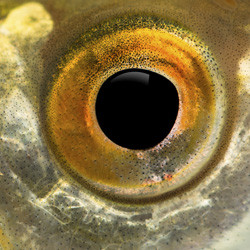Studying eye development in fish
Childhood blindness is very often a result of birth defects such as anophthalmia, microphthalmia and coloboma. These conditions arise as a result of abnormal development of progenitors in the eye during early embryogenesis. The EU-funded 'Molecular genetic regulation of eye field development' (EYEDEVELOPMENT) project used zebrafish as a model organism to study eye development. The work focused on the SIX3 family of transcription factors and particularly embryos lacking both SIX3b and SIX7 proteins. Scientists wanted to investigate why eye development fails when progenitors form normally. To identify the molecular and cellular mechanisms which explain this phenomenon, they isolated eye progenitors and compared their gene expression profiles. They excluded mutant progenitors that underwent p53-mediated cell death or presented an increased Wnt signalling pattern. Further work is expected to determine which other death-related mechanisms are in place. Additional mutant embryos lacking both SIX3a and SIX3b were generated. These demonstrated abnormal light passage through the lens of the eye associated with abnormalities in the optic nerve axon pathfinding. The observed defects could stem from retinal ganglion cells or could be attributed to abnormal signals from the environment. Molecular analysis unveiled reduced expression of certain chemokines whose precise role in axon guidance remains to be determined. Collectively, the results of the EYEDEVELOPMENT study indicate a novel role of SIX3 in optic nerve development and open up new avenues of research. Delineating the mechanisms which drive eye progenitor and optic nerve development will contribute to the development of cell replacement therapies in the future.







